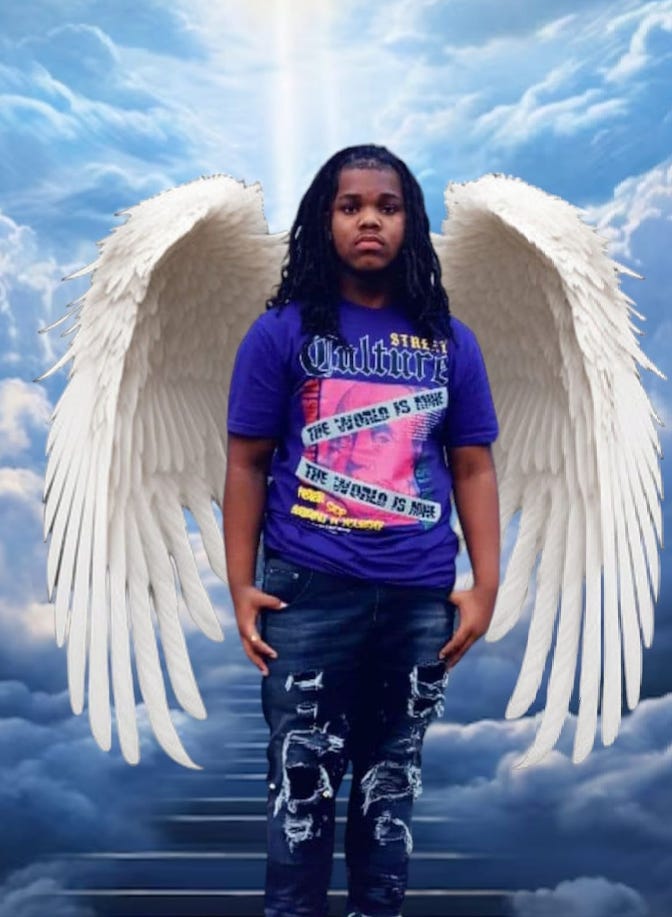At this Point All Gun Violence is State Violence
But their ruling will not change the fact that this boy was being killed slowly by the state before the police pulled the trigger and instantly when they did.
I've recounted the story of the Community Initiative to Reduce Gun Violence (CIRGV)'s downfall numerous times. As the former program manager and Community-Police Relations Coordinator for the City of Dayton, I saw firsthand how local authorities lost their political will to fund the program.
From my perspective, CIRGV and its counterparts could be as effective, if not more, than traditional law enforcement approaches. Yet, rather than seeking alternative funding sources for such programs, Dayton's leadership opted to invest in technologies like Shot Spotter and Automatic License Plate Readers. Sadly, it has become clear that these methods have not successfully curbed gun violence in our community.
A common refrain I resorted to when asked if CIRGV was effective is one that I picked up from my leadership- “It’s hard to count the crimes that don’t happen.” This was a mealy-mouthed response that neither took credit for a reduction in crime nor blame for the incidents that did occur. Admittedly, while the response was timid at best and cowardly at worst, the underlying truth was the same. There was no convincing empirical evidence that it worked. Thus, when the opportunity arose by way of another grant, to do something new I jumped at the opportunity.
I spent most of my time in 2019 into the early months of 2020, before the pandemic became the country's number one priority, trying to find funding and engender support for what we at the Dayton Humans Relations Council were calling the Community Safety Plan (CSP). Most experts agree that gun violence and other crimes are merely a symptom of other systemic problems such as concentrated poverty, food deserts, failing education systems, inadequate health care, housing insecurity, ill-maintained environments, and crumbling infrastructure. The basic idea of the CSP was to pick a specific neighborhood and work with the city, county, law enforcement, Dayton Public Schools, libraries, non-profits and community organizations to address all of these issues in a concentrated area to reduce crime, including gun violence in that neighborhood.
I resigned in May of 2020 and I am not exactly sure what happened to the program. Nonetheless, Recently, Mayor Jeffery Mims announced the revival of CIRGV under a new name known in many cities: Cure Violence.
Recently, local news has been reporting on what the police are calling “Pop-Up” parties where young people gather in front of abandoned houses to congregate and listen to music. Although I cannot assert with full confidence that better city management of recreational spaces or more investment by the state and county in community areas would prevent such gatherings, it's evident that we can do more for our young people.
While the city has rushed to assist developers in building condos and amenities downtown, they have been slow to accomplish their demolition goals, especially on the west side of Dayton. While I know it's imperative for any city's survival to have thriving spaces like the ones they are trying to accomplish downtown, I lack confidence that they understand the cost of the neglect of the west side. Not the least of which is the message that is communicated to young people who live on streets where half the houses are crumbling around them. A message that says you are not worthy of investment.
Sixteen-year-old Brian Moody was killed at one of these pop-up parties by a Dayton Police Officer. The Sheriff will investigate this shooting and likely rule that it was “justified” but their ruling will not change the fact that this boy was being killed slowly by the state before the police pulled the trigger and instantly when they did.
In my role as the Community-Police Relations Coordinator and as an engaged citizen, I've noticed a troubling pattern: whenever there is a police-involved shooting, particularly if the victim is not “squeaky clean”, some people quickly bring up "Black on Black" violence. This happens almost reflexively.
To those who raise this irrelevant question I must say this: in a nation, state, or city where a group has been historically oppressed and continues to be marginalized, mistreated, and deprived of essential resources, it is the state itself that bears responsibility for the resulting conditions and the actions that arise from them. This argument doesn't ignore the responsibility within communities—indeed, our community shows more love and support for each other than is often recognized.
This is about challenging the narrative that young people who fall victim to gun violence are solely to blame for their fate. The city of Dayton, in this instance, must confront its role in perpetuating these conditions. Merely reviving a previously defunded program without genuine belief or commitment to improve the conditions that give rise to crime, violence and incivility, is NOT an act of taking responsibility. We must, as a city, communicate to our young people that we care for them, that they are worthy of the city’s investment and they are loved by the people who run it.




